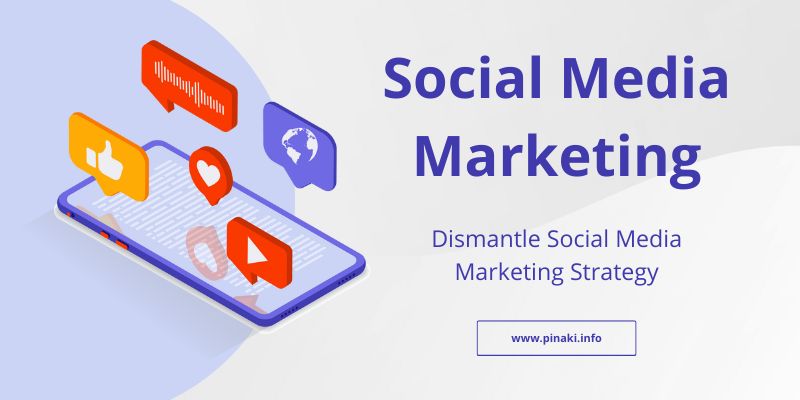The current digital environment turns social media into an instrument which helps businesses raise brand recognition and create meaningful ROI. Every business firm from startups to established enterprises should develop a strong social media strategy to achieve better online visibility and grow their operations. The following guide presents important guidelines together with proven strategies that will enable you to generate an impactful social media plan which produces concrete achievements.
Define Clear Objectives
Goals need to be established before starting content development or advertisement spending because they serve as the foundation for all efforts. Your social media strategy receives its direction from the objectives which you establish.
Brand Awareness: Your brand recognition will receive a boost through increased visibility which creates better brand awareness.
Lead Generation: Social media must generate leads then expand your customer base through building a contacts list.
Customer Engagement: Your audience engagement will strengthen through active interactions.
Sales and Conversions: Directly drive sales through targeted campaigns.
Specific goal setting allows you to evaluate your campaign success and measure your growing progress.
Identify Your Target Audience
Your strategy demands clear identification of the audience you should target. You should execute extensive market research to recognize the characteristics of your ultimate customers as well as their interests and their methods of using online platforms.
Audience Demographics: The first demographic factor includes Age together with gender and location and income level.
Psychographics: Psychographics include a person’s personal interests combined with their core values together with their daily behavioral practices.
Platform Preferences: Identify which social media platforms your target audience frequents.
Your social media messaging should match your audience requirements because it enhances the effectiveness of your communication engagement.
Choose the Right Platforms
Your brand requires particular social media platforms distinct from others. Focus your platform distribution on networks that your main customer base uses most.
Facebook & Instagram: Users who want visual storytelling along with community-building should use Facebook and Instagram.
LinkedIn: Perfect for B2B marketing and professional networking.
Twitter: Twitter remains an exceptional platform to deliver immediate updates together with customer interaction.
Pinterest: Brands with aesthetic products should use Pinterest as a platform because it offers optimal success.
Develop a Content Strategy
A social media strategy depends on content as its fundamental structure. The first step includes building a content planning schedule which integrates your brand directions while targeting your audience demographics. A combination of content varieties should form the basis of your strategy.
Educational Content: The content exists of educational materials with combination of blog posts and infographics as well as step-by-step guidelines that deliver significant value.
Entertaining Content: Your brand will become more relatable through videos as well as memes while behind-the-scenes features connect your audience to your company.
Promotional Content: The content uses promotions to showcase special deals in addition to new product releases alongside happy customer feedback.
User-Generated Content: Posting material created by content creators demonstrates to users how their products generate positive results while fostering social trust and brand loyalty.
The success of social media depends on persistent posting of high-quality content because this will keep viewers interested enough to perform desired actions.
Leverage Analytics and Data
Social media strategy enhancement requires using firsthand data discoveries. Routine checks on important performance indicators (KPIs) involving engagement rates and clicks-through rates and conversion metrics.
Use Analytics Tools: The tracking tools of Google Analytics combined with Facebook Insights as well as Hootsuite Analytics enable you to monitor your performance results.
A/B Testing: Social media users benefit from A/B Testing by assessing different post content with varying time schedules for performance optimization.
Adjust Strategies: The gathered information should direct you to adapt your methods in a continuous manner. Continue using methods that produce the maximum return on investment.
Periodic assessment permits you to switch strategies immediately in order to keep your approach successful.
Engage and Interact
Social media requires mutual interaction between users. Reach your audience by responding through comment sections and messages and creating discussion platforms such as polls or Q&A interactions.
Respond Promptly: A proactive response service builds trust between customers while enhancing their relationships.
Create Community: Build a community atmosphere through invitation to user participation and content creation by your community members.
Monitor Feedback: Regular observation of audience criticism requires a change in strategy through periodic monitoring.
The combination of active customer involvement strengthens both brand fidelity and develops your general online reliability.
To construct the top social media strategy you require defined objectives and audience-focused data alongside platform selection and engaging content creation and data-based assessment and sincere customer engagement. Your brand awareness along with maximum return on investment will increase by applying these steps. By embracing the ever-changing social media world you will witness business growth through strategic purposeful digital marketing engagement.

